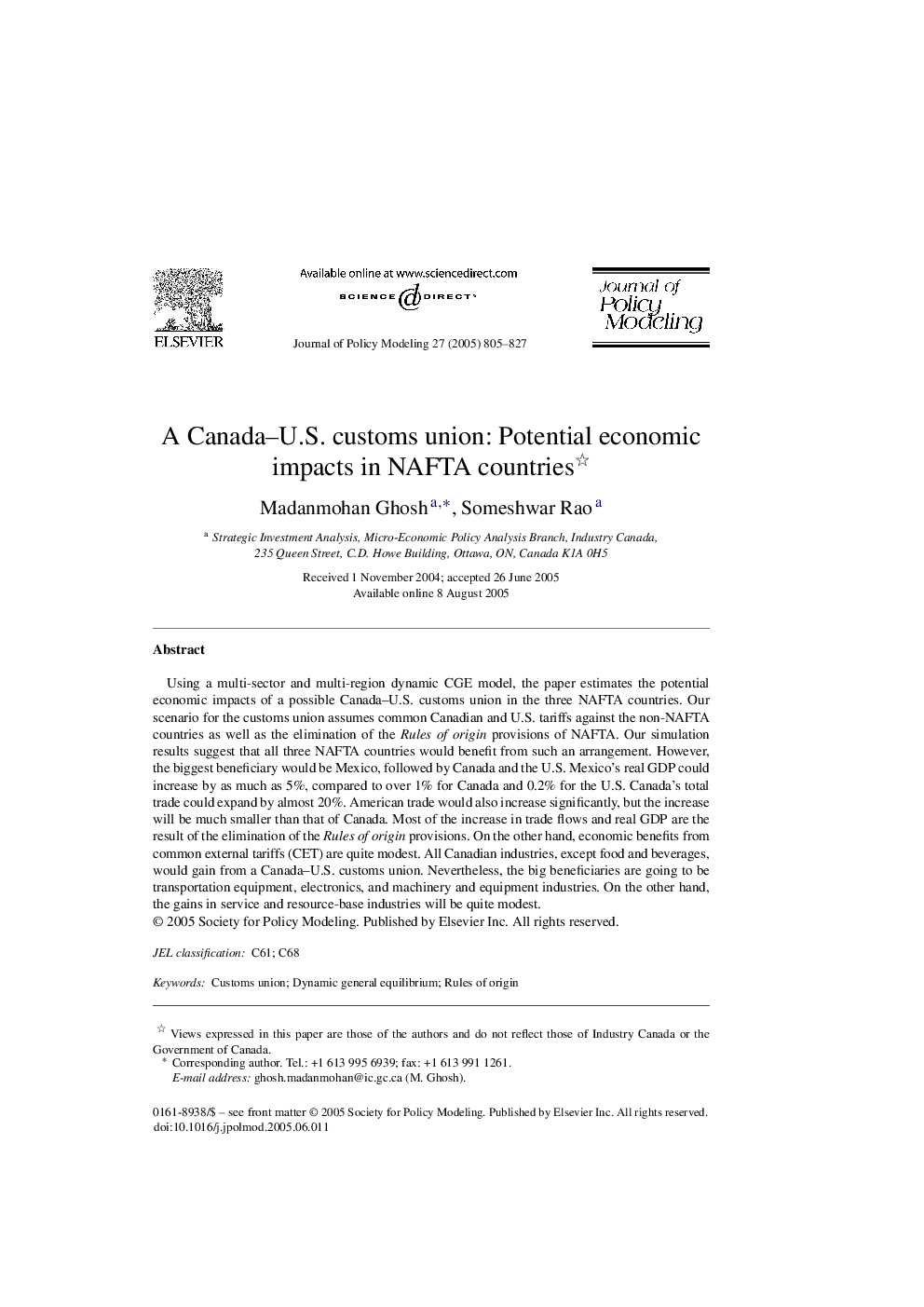| Article ID | Journal | Published Year | Pages | File Type |
|---|---|---|---|---|
| 10479502 | Journal of Policy Modeling | 2005 | 23 Pages |
Abstract
Using a multi-sector and multi-region dynamic CGE model, the paper estimates the potential economic impacts of a possible Canada-U.S. customs union in the three NAFTA countries. Our scenario for the customs union assumes common Canadian and U.S. tariffs against the non-NAFTA countries as well as the elimination of the Rules of origin provisions of NAFTA. Our simulation results suggest that all three NAFTA countries would benefit from such an arrangement. However, the biggest beneficiary would be Mexico, followed by Canada and the U.S. Mexico's real GDP could increase by as much as 5%, compared to over 1% for Canada and 0.2% for the U.S. Canada's total trade could expand by almost 20%. American trade would also increase significantly, but the increase will be much smaller than that of Canada. Most of the increase in trade flows and real GDP are the result of the elimination of the Rules of origin provisions. On the other hand, economic benefits from common external tariffs (CET) are quite modest. All Canadian industries, except food and beverages, would gain from a Canada-U.S. customs union. Nevertheless, the big beneficiaries are going to be transportation equipment, electronics, and machinery and equipment industries. On the other hand, the gains in service and resource-base industries will be quite modest.
Related Topics
Social Sciences and Humanities
Economics, Econometrics and Finance
Economics and Econometrics
Authors
Madanmohan Ghosh, Someshwar Rao,
